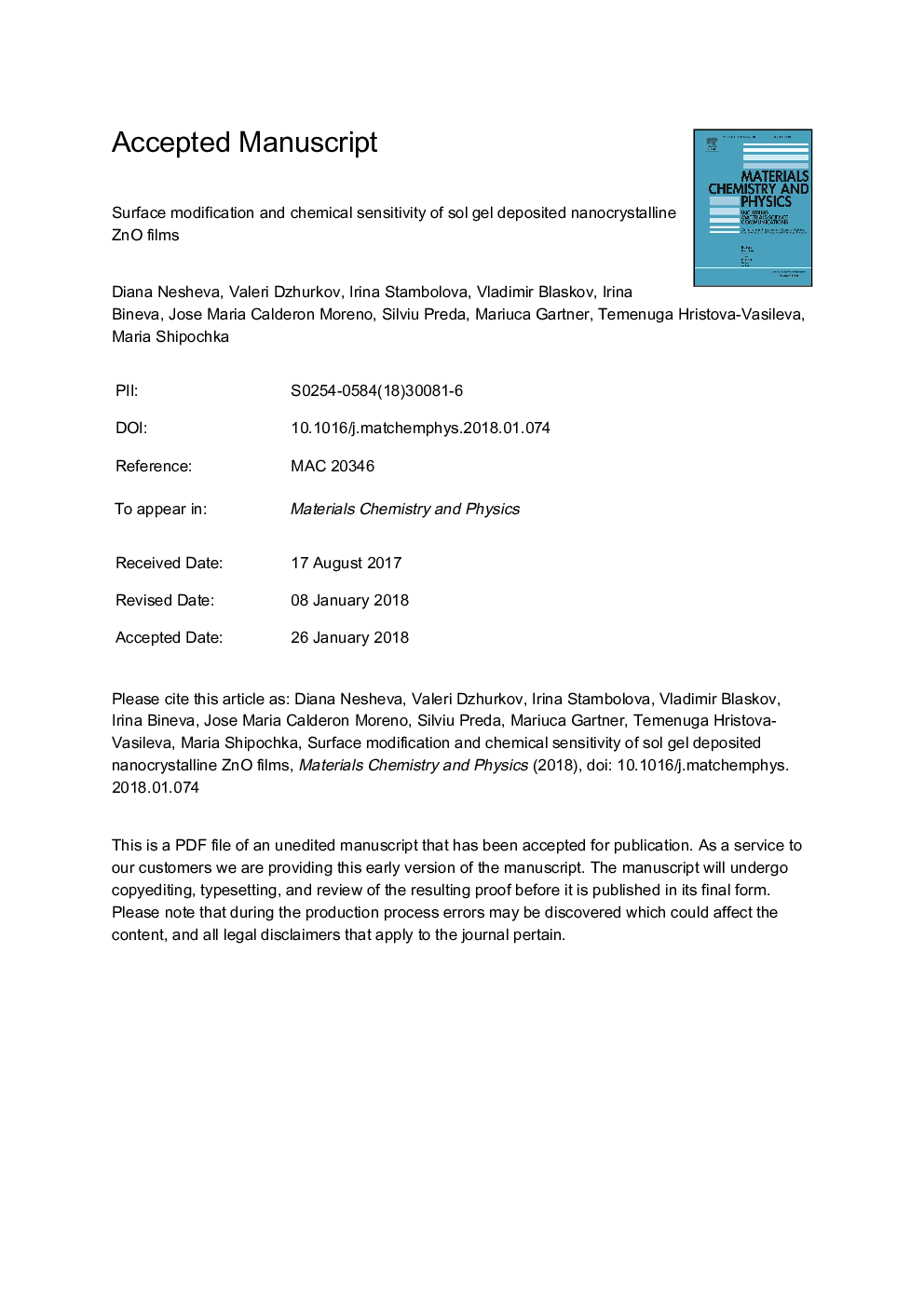| Article ID | Journal | Published Year | Pages | File Type |
|---|---|---|---|---|
| 7921921 | Materials Chemistry and Physics | 2018 | 26 Pages |
Abstract
Sol gel prepared nanocrystalline ZnO thin films are modified by combined usage of complexing agent (diethanolamine or monoethanolamine) and polymer (hydroxypropyl cellulose or ethylcellulose) in the initial sol. X-ray diffraction, Scanning electron microscopy and Atomic force microscopy are applied to get information about the crystallographic structure, microstructure, surface roughness and morphology of the films. It is shown that the unmodified films are smooth (root mean square roughness of 1.6-3.5â¯nm) with no surface cracks and consist of densely packed nanocrystals. Peaks, pits and aggregates of various density and size are observed on the surface of the modified films and the surface roughness increases up to 39â¯nm. It is found that the modification effect is determined by the specific combination 'polymer - complexing agent' used during the film preparation. The influence of the surface modification on the films' sensitivity to ethanol vapors at room temperature is studied by carrying out resistive measurements. A sensitivity increase of up to ten times is reached when combinations 'diethanolamine - ethylcellulose' and 'monoethanolamine - hydroxypropyl cellulose' are used causing significant increase of the total contact surface.
Related Topics
Physical Sciences and Engineering
Materials Science
Electronic, Optical and Magnetic Materials
Authors
Diana Nesheva, Valeri Dzhurkov, Irina Stambolova, Vladimir Blaskov, Irina Bineva, Jose Maria Calderon Moreno, Silviu Preda, Mariuca Gartner, Temenuga Hristova-Vasileva, Maria Shipochka,
